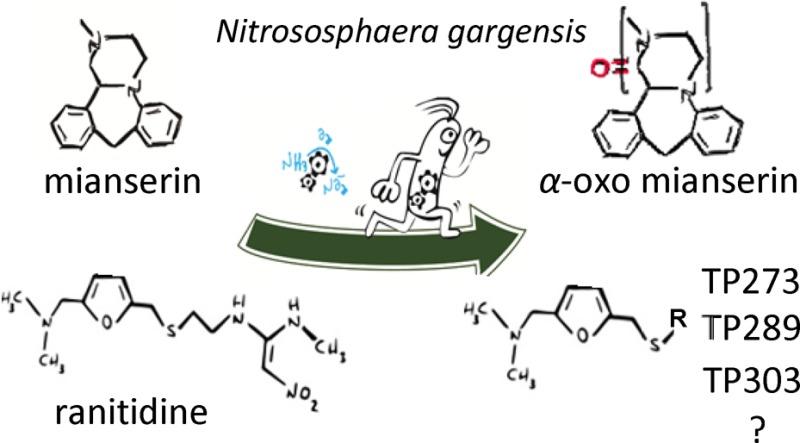- Record: found
- Abstract: found
- Article: not found
Biotransformation of Two Pharmaceuticals by the Ammonia-Oxidizing Archaeon Nitrososphaera gargensis

Read this article at
Abstract

The biotransformation of some micropollutants has previously been observed to be positively associated with ammonia oxidation activities and the transcript abundance of the archaeal ammonia monooxygenase gene ( amoA) in nitrifying activated sludge. Given the increasing interest in and potential importance of ammonia-oxidizing archaea (AOA), we investigated the capabilities of an AOA pure culture, Nitrososphaera gargensis, to biotransform ten micropollutants belonging to three structurally similar groups (i.e., phenylureas, tertiary amides, and tertiary amines). N. gargensis was able to biotransform two of the tertiary amines, mianserin (MIA) and ranitidine (RAN), exhibiting similar compound specificity as two ammonia-oxidizing bacteria (AOB) strains that were tested for comparison. The same MIA and RAN biotransformation reactions were carried out by both the AOA and AOB strains. The major transformation product (TP) of MIA, α-oxo MIA was likely formed via a two-step oxidation reaction. The first hydroxylation step is typically catalyzed by monooxygenases. Three RAN TP candidates were identified from nontarget analysis. Their tentative structures and possible biotransformation pathways were proposed. The biotransformation of MIA and RAN only occurred when ammonia oxidation was active, suggesting cometabolic transformations. Consistently, a comparative proteomic analysis revealed no significant differential expression of any protein-encoding gene in N. gargensis grown on ammonium with MIA or RAN compared with standard cultivation on ammonium only. Taken together, this study provides first important insights regarding the roles played by AOA in micropollutant biotransformation.
Related collections
Most cited references46
- Record: found
- Abstract: not found
- Article: not found
Short-term assay of soil urease activity using colorimetric determination of ammonium
- Record: found
- Abstract: found
- Article: not found
The Thaumarchaeota: an emerging view of their phylogeny and ecophysiology
- Record: found
- Abstract: found
- Article: not found
